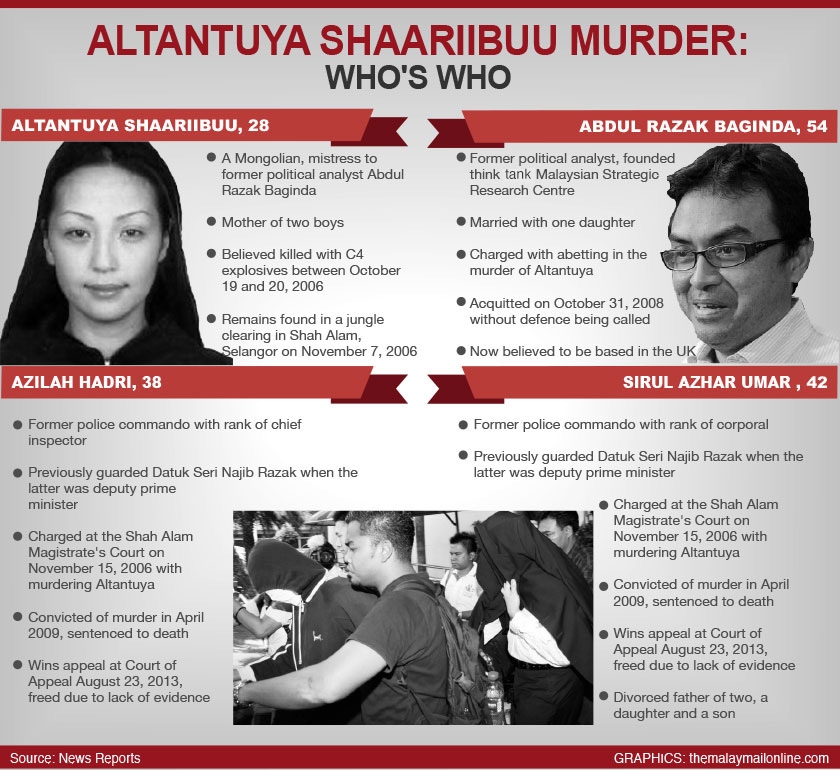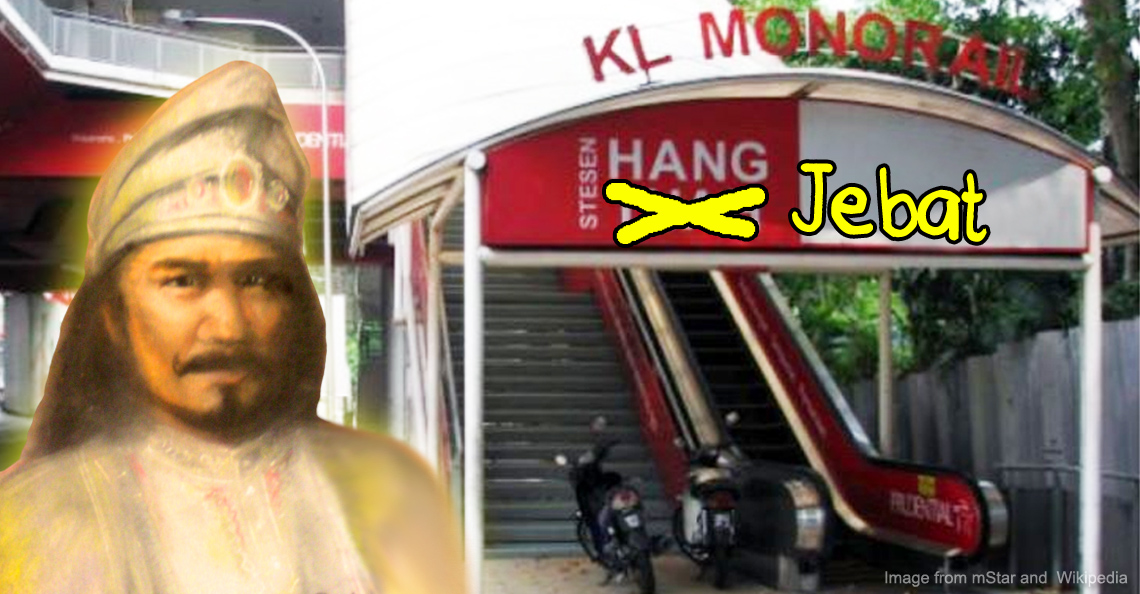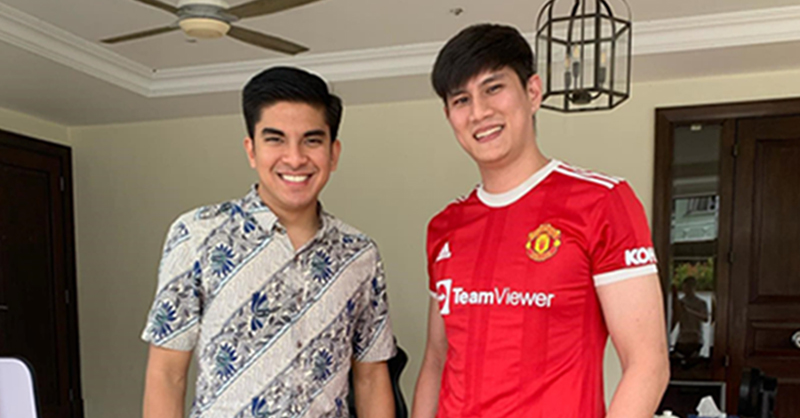4 possible reasons to why Altantuya’s murder trial took so long
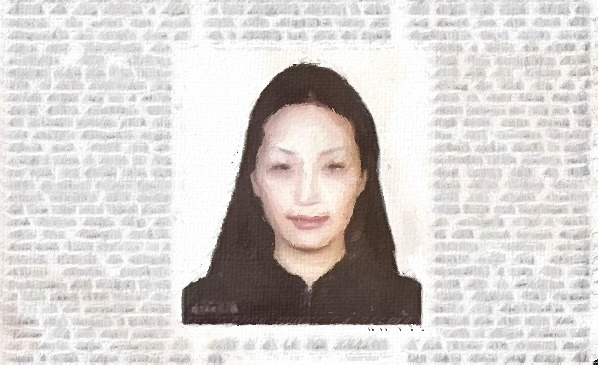
- 4.1KShares
- Facebook3.7K
- Twitter31
- LinkedIn50
- Email58
- WhatsApp284
[This article was originally written in Jan 2015 but contents are still relevant today.]
Recently, we started hearing the name Altantuya Shaariibuu again, the Mongolian model who was brutally murdered. It’s a case that has been going on for about 10 years, but that hasn’t deterred her father, Setev Shaariibuu, to lodge a police report to revisit the matter. Prime Minister Dr Mahathir has also given his support to the matter.
In 2015, there were news that her murderers were to hang. But that news came NINE YEARS after the murder happened. 9 years. That’s like…longer than the time that the iPhone’s been around (the first iPhone came out in 2007).

WHY SO LONG WEI!? Really, why 9 years to solve one murder case? We at CILISOS were determined to find out. But first, let’s get everyone up to speed.
Who was Altantuya and why was she murdered?
For the sake of those who do not know very much about the story or may have heard but forgotten, this is for you. Altantuya was a Mongolian translator and aspiring model who got mixed up with a certain Abdul Razak Baginda. A former political analyst and confidante (basically well trusted by someone) of then Deputy Prime Minister, Dato’ Sri Najib bin Razak, he and Altantuya were said to be involved with the Malaysian Scorpene Submarine deals.
According to Razak Baginda’s account:
They met in Hong Kong in 2004 and had an affair that turned sour when she started harassing him for money. He then hired private investigator, the late P. Balasubramaniam, and requested help from former Deputy Superintendent Musa Safri to protect his family and was introduced to Chief Inspector Azilah Hadri.
Altantuya was then taken away by Chief Inspector Azilah Hadri, and Corporal Sirul Azhar Umar, two officers (and some say personal bodyguards) and another policewoman after once again appearing in front of Razak Baginda’s house to harass him.
That was the last time anyone else saw Altantuya. Her remains were found in November 2006, about two to three weeks since she was last seen. She was allegedly shot twice and very very morbidly blown up using C-4 (an explosive compound) to cover the evidence.
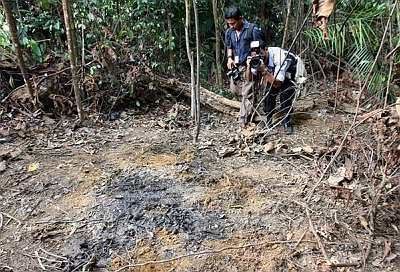
The two policemen, Azilah and Sirul, were eventually arrested and charged with murder and Abdul Razak Baginda was charged with abetment (in other words, he was charged with asking the two policemen to do it). Razak Baginda has since been acquitted from his charge while the other two went to trial.
For a more detailed summary, this link should prove helpful.
So why NINE years later only kowtim? Here are 4 possibilities.
As terrible as it is, brutal murders do happen every once in a while but why did this trial take so long? Even if there were appeals, why did it take another 4 years (they were sentenced to death in 2009) for these appeals to be processed? Even the infamous Mona Fandey case took less than 2 years to conclude (which we have talked about here).
And honestly we don’t want to go digging up skeletons that have been in the closet so long that they’re fossils but we think it’s worth revisiting to explore why it took as long as it did. So here we go…
1. The two policemen seem to have no reason to murder her
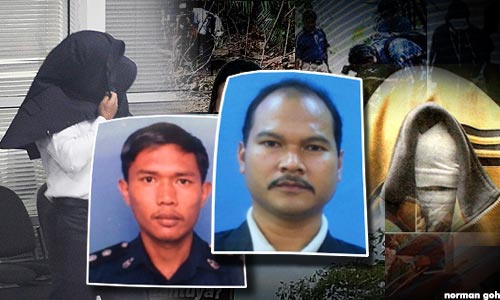
One possible reason of why the trial took so long was the inability to establish the motive behind the murder. After Razak Baginda was cleared of his abetment charge, Azilah and Sirul remained the only two suspects in the case – leaving the burning question of why they would do such a thing.
Chief Inspector Azilah Hadri and Corporal Sirul Azhar Umar were members of the Unit Tindakan Khas (UTK) whose main duty was to escort VVIPs (Prime Minister, Deputy Prime Minister and so on). It was also said that they would carry out their orders without hesitation because they are not allowed to question orders which begs the question of whether or not they were ordered to kill Altantuya.
Oh btw, their pictures were only very recently released to the public. They never had their picture taken throughout the trial.
The closest thing to a motive (or a lack of it) after that were parts of the statements that were made by Sirul in court about him being nothing more than a scapegoat.
“I have no reason to cause hurt, what’s more to take the life of the victim in such a cruel manner, I appeal to the court, which has the powers to determine if I live or die, not to sentence me so as to fulfil others’ plans for me.” – Corporal Sirul Azhar Umar as quoted by asiasentinel.com
He also claimed that on that night that Altantuya was last seen, Azilah had told him that she had agreed to not disturb Razak Baginda anymore and thus he went home. However, his claims were not taken into consideration because he could not prove them.
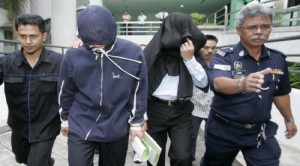
Another question that we realised was left unanswered was why did both Azilah and Sirul lead the police to the site of the murder? It was reported that it would have been extremely difficult to find the scene of the murder but both of the suspects led the police there.
The police only knew a general location and not specific location of the place. It is impossible for the police to locate the place which was on the top of a hill in the jungle…the spot could not be easily located, unless they had information – Deputy Solicitor-General II as quoted by The Sun Daily
Even if these claims aren’t substantiated, it does bring up some valid points. That the two policemen really did not have a good motive to murder Altantuya. That kinda makes it difficult to put a criminal case together for murder.
2. The one guy that seemed to have motive wasn’t convicted
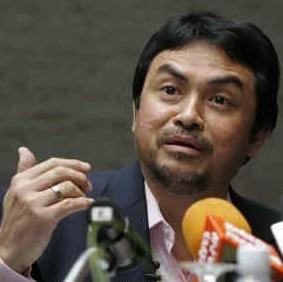
The one person that actually might have had a motive to kill Altantuya, Abdul Razak Baginda, was let off thus leaving prosecution lawyers the task of determining not only the motive but the person behind the murder. What was his motive? Well at the time, Razak Baginda was trying to close a massive (and very dodgy) RM7billion deal to purchase two Scorpene submarines from France. In fact, in THAT case, he’s still being investigated.
“The motive for Altantuya’s death was reportedly twofold: EUR 500,000 she wished to claim as her share of the “commission” for the submarines, and the public embarrassment caused to Baginda’s marriage after his paramour tried to collect.” – ‘Scorpene Sting’, Defense Industry Daily, March 2013
What happened was that as the trial proceeded, three particular people made claims about Razak Baginda and other possible suspects behind the murder. Those three people were Altantuya’s cousin, Burmaa Oyunchimeg, the private investigator (P.I.) mentioned earlier, P. Balasubramaniam, and a famous Malaysian blogger, Raja Petra Kamarudin.
Altantuya’s cousin claimed during the trial that Altantuya showed her a picture of Altantuya with Razak Baginda and Dato’ Sri Najib Razak. However, the photo was never produced in court thus her claim was never proven.
Also as mentioned earlier, P. Balasubramaniam was hired by Abdul Razak Baginda to protect his family. But the P.I. took central stage in this story when he released a statutory declaration (SD, something like a testimony to help a trial) in July 2008. In his SD, he said that Dato’ Sri Najib Razak introduced Altantuya to Abdul Razak Baginda. Amongst other things, he also claimed that Razak Baginda, on the day he was arrested, received a message from the then Deputy Prime Minister which said “I am seeing the IGP at 11am today…matter will be solved…be cool.”
However, less than 24 hours later he released another SD that stated that his previous SD was innacurate and not true. He then went into hiding in India (and made claims such as this) but returned to Malaysia where he passed away from a heart attack in 2013.
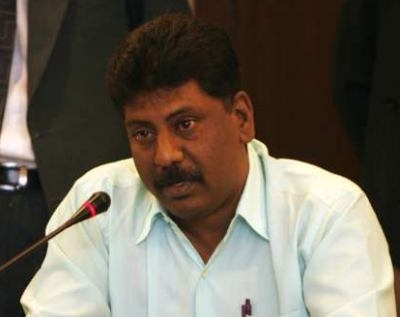
The other statutory declaration was made by Raja Petra Kamarudin, an editor for the Malaysian news blog, Malaysia Today in June 2008. In his SD, he claimed to have received information that Datin Seri Rosmah Mansor, the wife of Dato’ Sri Najib Razak, was present when Altantuya was murdered.
However, he too retracted what he had said. It was reported in April 2011, that he did not believe that Datin Seri Rosmah Mansor was present at the murder and that he had been misinformed.
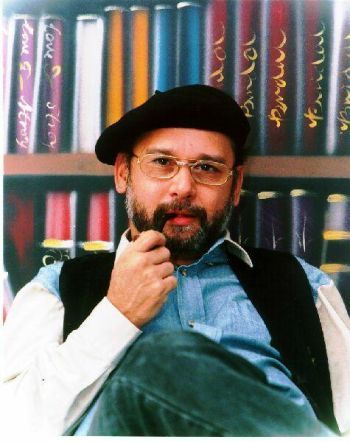
After all this, Datuk Seri Najib Razak then released a statement which said he did not know and had never met Altantuya.
So all claims were eventually discredited or retracted and Razak Baginda was acquitted from his abetment charge in 2008 because the prosecution lawyers failed to build a case strong enough that would require him to defend himself (prima facie). The prosecution lawyers also decided not to appeal (despite the pleas of Altantuya’s father to do so) because the judge chose to acquit Razak Baginda after reviewing facts from both parties (finding of fact).
Eventhough it was way back in 2008 (iPhone 3GS launch, OMG), the unsolved elements in this area have also been continually investigated, possibly causing distractions to the overall trial.
3. The lawyers involved seemed to keep changing

There were a number of changes to the lawyers involved in this case.
On the defense side:
a) It is mentioned here that the two policemen were first represented by Shaun Tan Kee Shaan.
b) This one then mentions that Azilah was represented by Zulkifli Noordin and Juanita Johari while Sirul was represented by Kamarul Hisham Kamaruddin, Hasnal Redzuan Merican and Ahmad Zaidi Zainal.
c) Then before the trial, this article said that Azilah would be represented by Hazman Ahmad and J. Kuldeep Kumar (this one would be explained further below).
d) During the appeal process in 2012, it was reported that Sirul was being represented by Kitson Foong and Lim Kon Keen (but later in the year, he was back to being represented by Hasnal Rezua Merican).
On the prosecution side:
a) On the day before the trial, it is reported that a new team of prosecution lawyers were appointed. These lawyers were Tun Abdul Majid Tun Hamzah, Manoj Kurup, Noorin Badaruddin, Hanim Rashid, and Wong Chiang Kiat (will be explained further below).
b) During the appeal process, this article reports the prosecutors to be K. Mangai and Farah Ezlin Yusop Khan.
That is a lot of changes…
Among these changes, only 2 of them had news reports that specifically talked about them and those are the change of defence lawyers (the one that says the accused is innocent) a few days before the trial and the prosecution lawyers (the one that says the accused is guilty) on the day of the trial itself.
Firstly, it was announced that Azilah’s defence lawyer had been replaced just days before the set date of June 4 2007,
It was later clarified that the lawyer that had been replaced chose to step down due to interference by third parties that prevented him from performing his duties to the best of his ability.
There were serious interferences by third parties in my preparation of the defence and trial, which had put me in a position of not being able to carry out my duty to defend my client to the best of my ability. – Zulkifli Noordin, former defence lawyer of Azilah, as quoted by The Sun Daily
If that sounded like a scene out of a drama, the next one more drama. On the day of the trial, there was a whole new team of prosecution lawyers in court! They said they had only been appointed the night before and asked for a month’s extension for the trial because tak cukup masa to prepare. In the end, a 2 week’s extension was given.
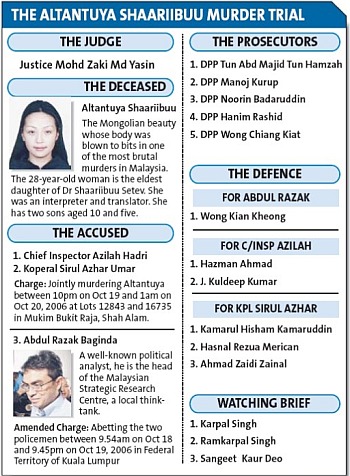
Our favourite pony-tailed lawyer, Fahri Azzat, (who was one of the few lawyers in town NOT involved) had this to say about the changes.
As a lawyer, I would not advise doing such a thing (changing lawyers so close to the trial date) unless there was something fundamentally wrong with the team that I discovered late in the day. So this is not a normal thing. It would and should happen in only the most drastic and dire of circumstances. – Fahri Azzat
He also talked about how this can have an effect on the whole trial. If the extension had not been given, the lawyers’ performance would have been affected and thus affect how the trial would turn out. On the other hand, if the extension was given then time would have been wasted. So both scenario also got problem.
And to see what has transpired since then (at least up to 2013), here is a good infographic.
4. The appeal process took longer than the trial itself
Azilah and Sirul were sentenced to death in 2009, which was about 3 years after the murder and nearly 2 years since the start of the trial. But what was the reason for the long delay was actually the appeal process. If you take a look at this timeline, it states that the appeals were only reviewed in 2013. That is 4 years after the sentencing, longer than the actual trial itself.
In 2011, it was reported that no appeal date had been set for the court to hear the appeal yet because the judge had yet to finish filing his judgement (70 pages long btw). It was then reported the appeals would be heard in February 2012, but was then postponed because of one of the convicted, Azilah’s, appeal had not been filed due to slow proceedings.
The next date, August 2012, was postponed as it clashed with the Hari Raya Aidilfitri celebrations and it seemed that the appeal hearing would finally take place in October 2012. But that didn’t happen. We at CILISOS could not find out why but all we know is that it was confirmed that it would be held in June 2013 (if ugaizzz know anything about this please let us know!).
Well even if it is a very long time to us, we weren’t sure if it was normal for appeals to take so long so once again we asked our friend Fahri and he said this.
Yes, it is quite normal because the appeal process takes time. But I am not sure what took so long in this case particularly since it was obvious that the case was a matter of public interest. – Fahri Azzat
So yes, it is possible that the whole Altantuya murder trial took so long only because the processes involved in a court case are long and tedious.
But actually, it’s NOT really Kowtim, since one of the suspects is now in Australia
Even after all this, it still doesn’t look like this case will end anytime soon. Sirul, the lower ranked of the two, was not present in Malaysia when their appeal was overturned. It was then reported that he is currently in Australia and has been there since October last year It was reported that he was arrested in Australia when this article was being written. He is currently being detained over there but whether or not he will be sent back is unclear at the moment.
Why can’t we go straight to Australia and bring him back when we know he’s there? In fact, Malaysia has an agreement with Australia about sending suspects or wanted criminals back to each other to face trial (extradiction). Well the problem is that Australia is a country that opposes the death penalty and thus if they sent him back it would be against their laws.
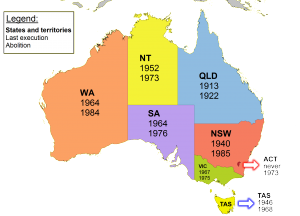
The question is then how did a murder suspect leave the country? Well according to Fahri once again (now you know why we awarded him the ‘Favourite CILISOS Friend’ award) before their appeals were overturned, they were technically free men because, well, their appeal against the death sentence was succesful. So for them to leave the country was legal. What should have been done however, was to monitor them because still got chance their appeal kena overturn..
AG/PDRM (Attorney General/Polis DiRaja Malaysia) should have taken some measures to ensure that they were observed and their ability to leave the country freely be restrained by applying for their passports to be detained pending the disposal of the Federal Court’s decision. – Fahri Azzat
Btw it looks like it would be at least 2 years before any decision is made by Australia on whether to send him back or not. In fact, some question why he was even allowed to enter Australia as a murder suspect, and if the Aussie gomen is actually using him as leverage to broker more one-sided trade deals with Malaysia.
Whatever the outcome, people deserve to know

When a case like this happens in any civilised country, involving such big names such as our PM, his wife and his confidante, it’s usually resolved pretty quickly due to public pressure. Take for example this list of the 10 biggest political scandals in the United States of America. As we examined these scandals we found that most of these scandals were resolved in around 2 years. The top three scandals in that list, the Watergate scandal, the Lewinsky scandal and the Iran-Contra affair were resolved in less than 2 years.
When a murder trial happens like this that even so much as mentions the name of the Prime Minister, the investigation should not take NINE YEARS.
“Najib is absolutely duty-bound to say outright whether he was ever photographed with Altantuya, in view of the serious implications of Burmaa’s allegation.” – MuslimMalaya786
Because really, the Rakyat deserve the truth about the man leading their country, and the family of Altantuya deserve some much overdue closure.
“I appeal on behalf of my deceased daughter, my wife, my two grandsons and all Mongolian citizens, not to let my daughter Altantuya die in vain. Her body may have been blasted into a million unrecognisable pieces, but our hearts remain one: to seek justice for my beloved daughter, to put her spirit to rest, and to ensure her orphaned son have a reasonable future.” – Setev Sharibuu, Altantuyaa’s father to Susan Loone, October 2009.
- 4.1KShares
- Facebook3.7K
- Twitter31
- LinkedIn50
- Email58
- WhatsApp284

